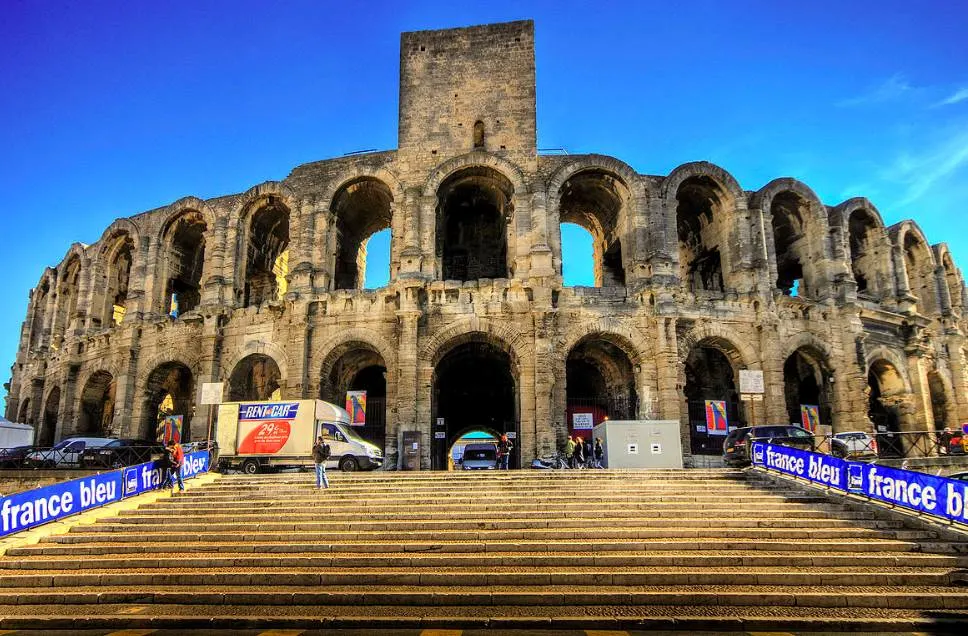When you visit Southern France, you’ll be amazed at how many Ancient Roman buildings still stand today.
The Romans constructed buildings all across the Roman Empire, including forums, temples, bathhouses, and amphitheaters.
One of the most amazing examples of a well-preserved ancient Roman arena can be found in a coastal city of the Provence-Alpes-Côte d’Azur region.
In this article, you’ll discover some of the most interesting facts about the Arles Amphitheater, a structure that has survived the test of time.
1. It’s located in the heart of this city in southern France
The Arles Amphitheatre can easily be referred to as the centerpiece of Arles. That’s because it’s located right in the heart of this relatively small town in southern France.
Arles is located in the Bouches-du-Rhône department of the Provence-Alpes-Côte d’Azur region in the utmost southern part of France.
Known as an artistic center where many famous artists have lived, including Pablo Picasso and Vincent van Gogh to name just a few, this town is situated between the major cities of Montpelier and Marseille.

2. It was completed around the same time as the largest Roman arena in history
The Romans took the town of Arles in 123 B.C. and referred to it as “Colonia Iulia Paterna Arelatensium Sextanorum” or “the ancestral Julian colony of Arles of the soldiers of the Sixth.”
The town gradually grew and many buildings were constructed here, including an aqueduct that provided the city with running water.

The first arena in Arles was constructed in the 1st century B.C. and this wooden structure was replaced by the huge stone arena that still stands in the city center today.
It was completed around 90 A.D, about a decade after the Colosseum in Rome was officially inaugurated.
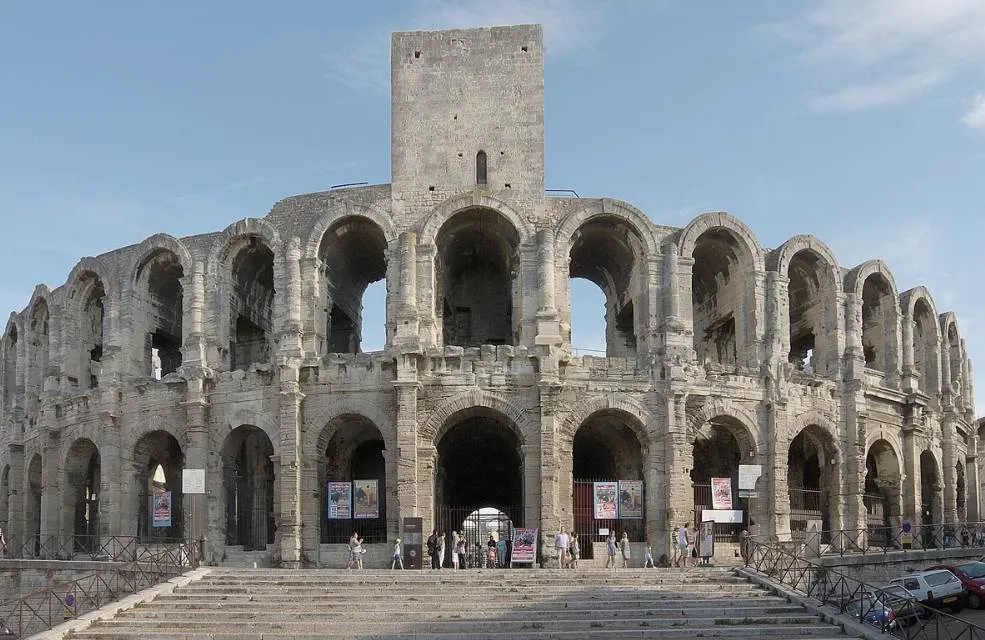
3. It could seat 20,000 people which emphasizes the importance of the ancient city
The arena could seat 20,000 spectators which is a bit less than half the estimated capacity of the Colosseum which could seat 50,000.
This is still an impressive number and emphasizes the importance of Arles as a regional town during the initial phase of the Roman Empire.
What we need to understand is that Arles was located much closer to the sea in ancient times. The Romans already completed a canal that connected the city to the Mediterranean Sea in 104 B.C.
The Roman town of Arelate was a major regional center in the province of Gallia Narbonensis as it covered an area of 40 hectares (99 acres).
Upon completion, the Arles Amphitheatre was used extensively for gladiator fights and chariot races.
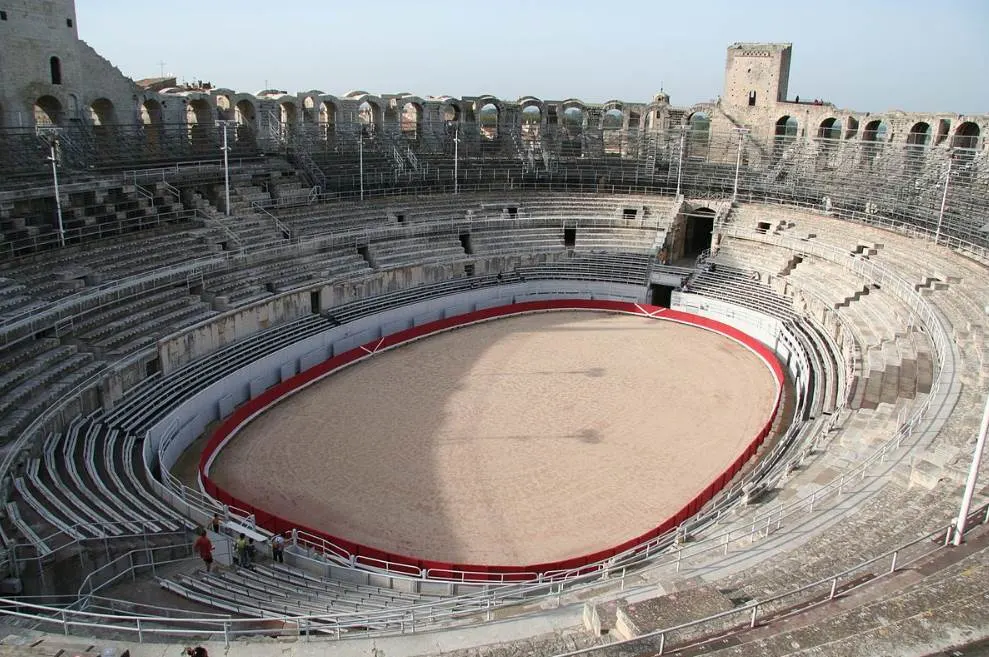
4. How big is the Arles Amphitheatre?
Although the arena was modeled on its bigger brother in Rome, it was purposely made smaller because the crowd never really exceeded 20,000 spectators (which was still a very impressive number).
The arena consists of two tiers and is surrounded by a single gallery that completely encircles the venue and is supported by 120 arches.
The oval-shaped arena is huge as well as it has dimensions of 136 x 109 meters (446 x 358 feet), the size of the average football field.

5. It was transformed into a fortification after the fall of the Western Roman Empire
The importance of Arles remained for many centuries and even peaked in the 4th and 5th centuries. Arles became the stronghold for Roman Emperors during military campaigns in Western Europe.
It became the seat of the Praetorian Prefecture of the Gauls which means that the entire Western part of the Roman Empire was ruled from there.
The Western Roman Empire fell in the 5th century and the purpose of the area was radically changed.
4 defensive towers were constructed on all sides of the former entertainment venue and it became a medieval fortification, a purpose it serve for numerous centuries.
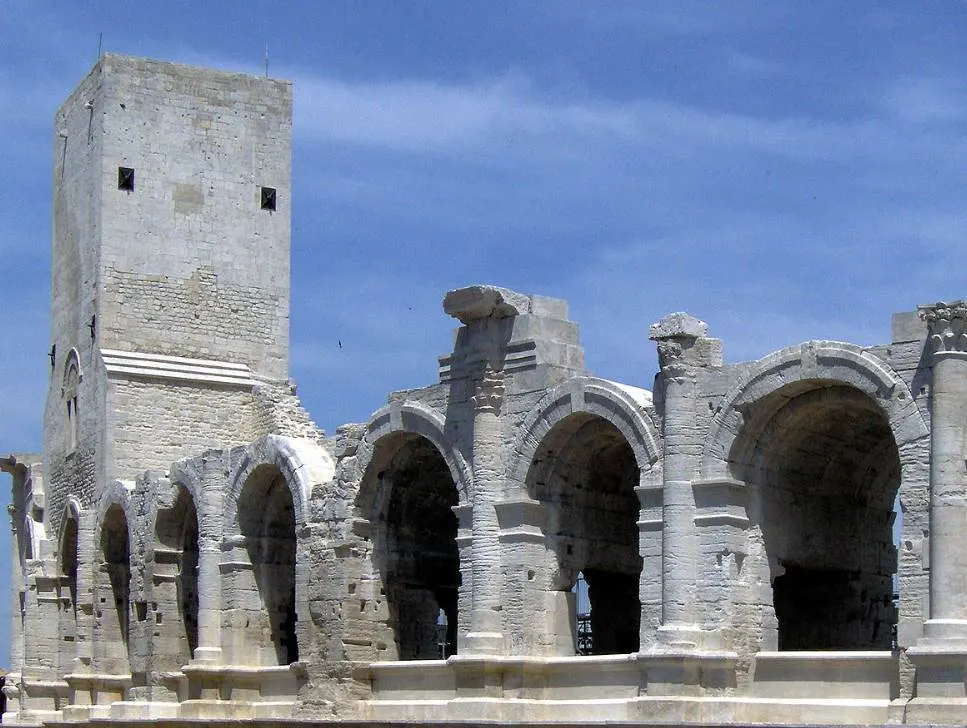
6. The arena served as a residential area with 200 houses until the early 19th century
The massive building became a stronghold for the people living in Arles during the Middle Ages and beyond.
Up to 200 houses were constructed against both the interior and exterior walls of the buildings and the former arena floor was transformed into a public square.
The arena had become a real town and two chapels were constructed. The area remained in this state until the early 19th century.
The Romantic era marked the start of preservation campaigns for historical monuments, and the Arles Amphitheatre was classified as such.
The houses were razed and the arena was used again for entertainment purposes, starting in 1830 with a bull race to commemorate the Taking of Algiers by the Kingdom of France.
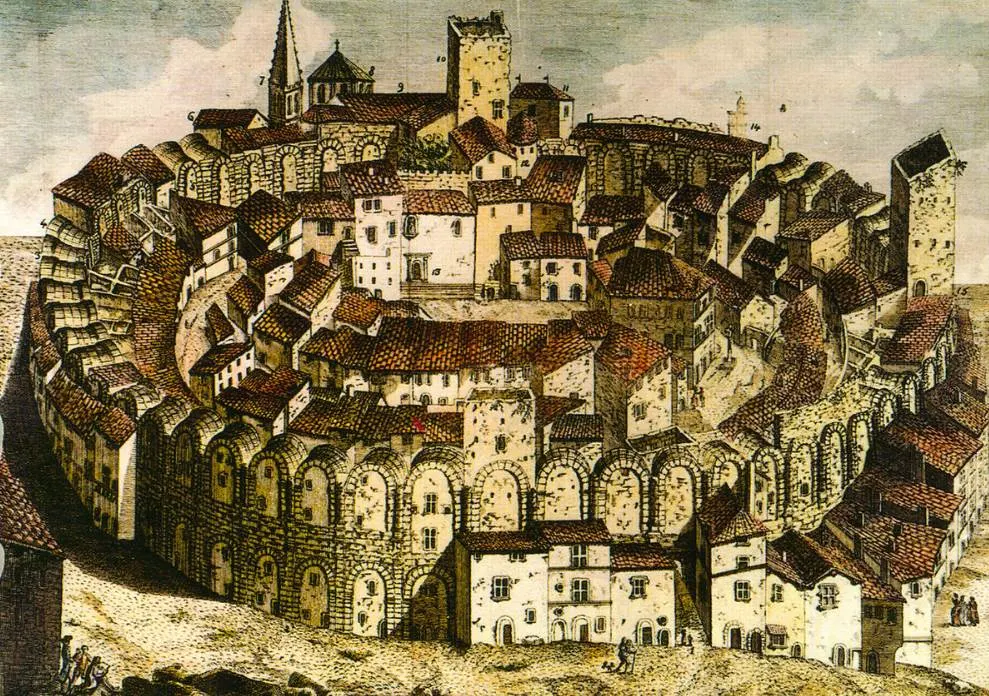
7. The amphitheater is still being used for many events today
The arena that once welcomed thousands of bloodthirsty Romans on a regular basis once saw bloodsports again in the form of bullfighting.
This tradition has continued until today because an annual bullfight is held here during the Feria d’Arles, a popular festival in the city.
During the Summertime, the arena is also often used for theatrical performances and concerts, similar to how the nearby Arena of Nîmes is still being used today.

8. It became a UNESCO World Heritage site along with several other monuments in Arles
Arles is extremely rich in both ancient monuments and Romanesque buildings. That’s why these Roman and Medieval buildings were designated a UNESCO World Heritage site in 1981.
Together, they form the “Arles Roman and Romanesque Monuments group.” Along with the arena, it includes the:
- Baths of Constantine
- Roman theater
- Necropolis of Alyscamps
- Cryptoporticus (an underground gallery)
- Saint-Trophime Primatial Catholic Church
